Common Battery Types And Their Sizes

We currently live in an electronic utopia where devices are available for various purposes-to perform any sort of task we can think of. But because these devices are all "electronic," they all need a certain kind of power source to function. One such power source for many devices, particularly portable electronic devices, is the battery. However, its usage is not limited to just this one category of devices.
There are various battery sizes and types available. If you want your gadget to function properly, picking the right-sized battery is crucial. If you purchase a battery that is too small or large for your device's housing, you will not be able to use it. Therefore, to prevent you from making such mistakes, I have included all the information about batteries that we use daily in this article, from their sizes to the varieties that you can find in your local supermarket.
Types of Batteries
There are many types of batteries available in the world. They vary depending on their composition materials and sizes. The battery in your car is significantly bigger and not at all like the one in your phone.
So, to clear up any confusion, the most common battery types based on their composition are mentioned below.
- Alkaline Batteries
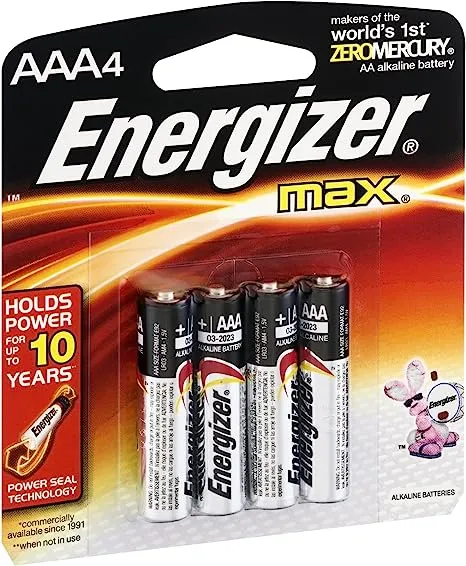
Photo from Amazon
This is one of the most popular type of battery. It is reported in wikipedia that about 80% of manufactured batteries in the US in 2000 was alkaline batteries. These are used in many of household devices such as remote control, consumer electronics, toys and others. These batteries are very economical as well.
Alkaline batteries are so named as alkaline, most commonly potassium hydroxide (KOH), is used as electrolyte here. If you are interested in some science - the batteries depend on zinc and manganese dioxide’s reaction to produce energy.
- Lithium Batteries
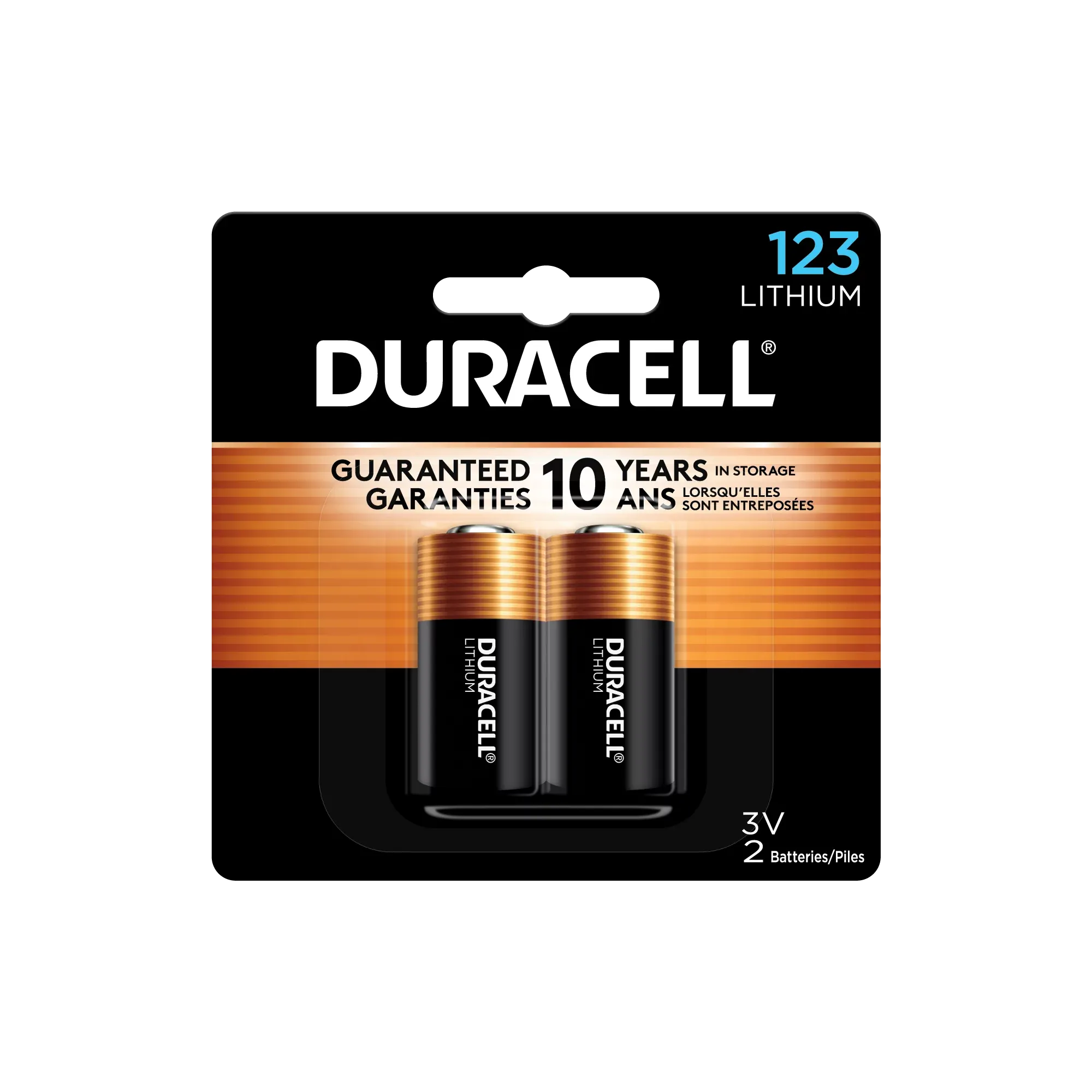
Photo from Walmart
This is one of the most commonly used battery types in current times. These batteries get their name from the metallic lithium that serves as their anode. Both rechargeable and non-rechargeable versions of these batteries are available. In addition, this type of battery can hold way more energy compared to other batteries (i.e. alkaline) because of its high density of energy.
- Silver Oxide Batteries
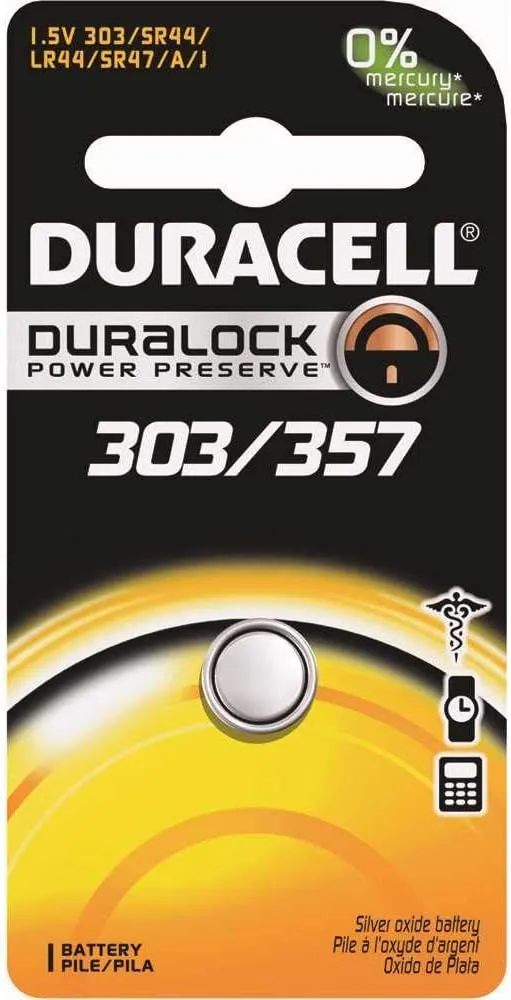
Photo from Amazon
These tiny batteries are only available in button cell format and are used in devices that do not require that much power, such as calculators, car keys, wrist watches etc.
- Carbon Zinc Batteries
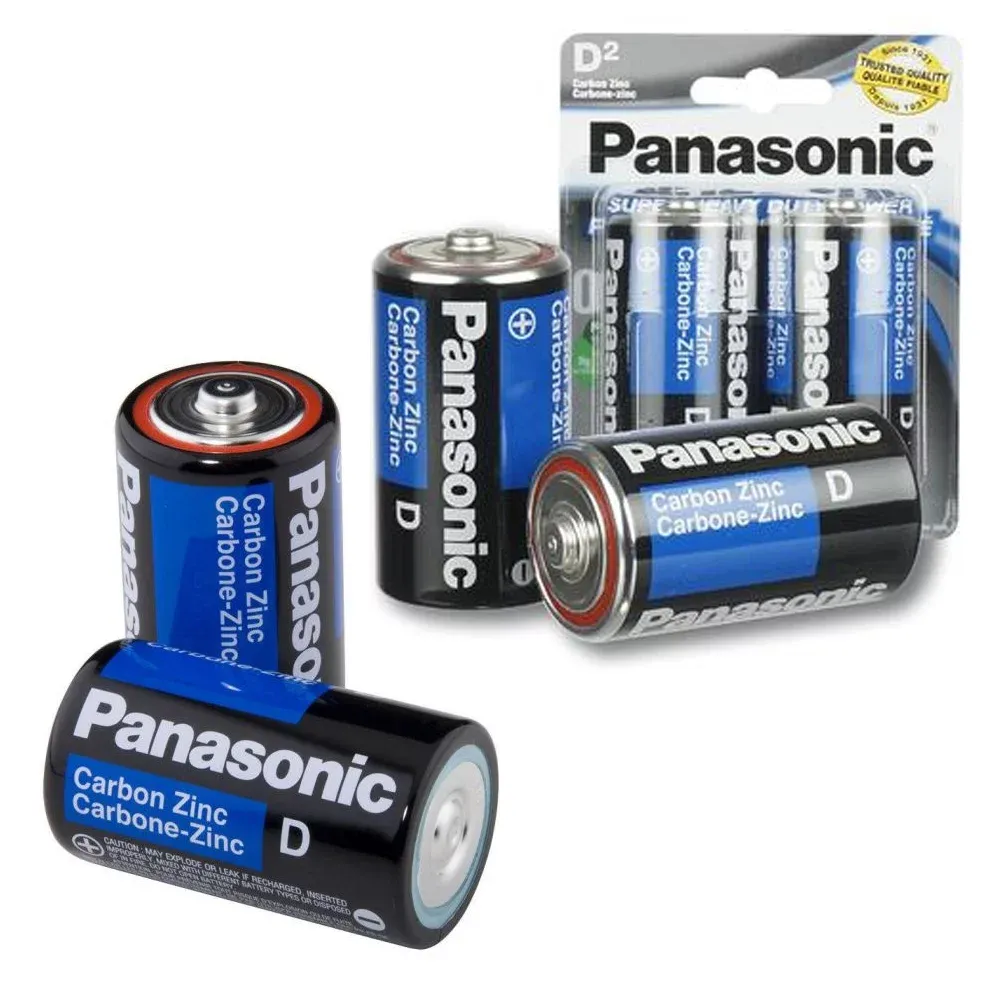
Photo from Walmart
Due to their affordable price, this kind of battery is fairly well-liked throughout the world. But these batteries have a low density of energy which results in a shorter battery life.
- Lithium-ion Batteries
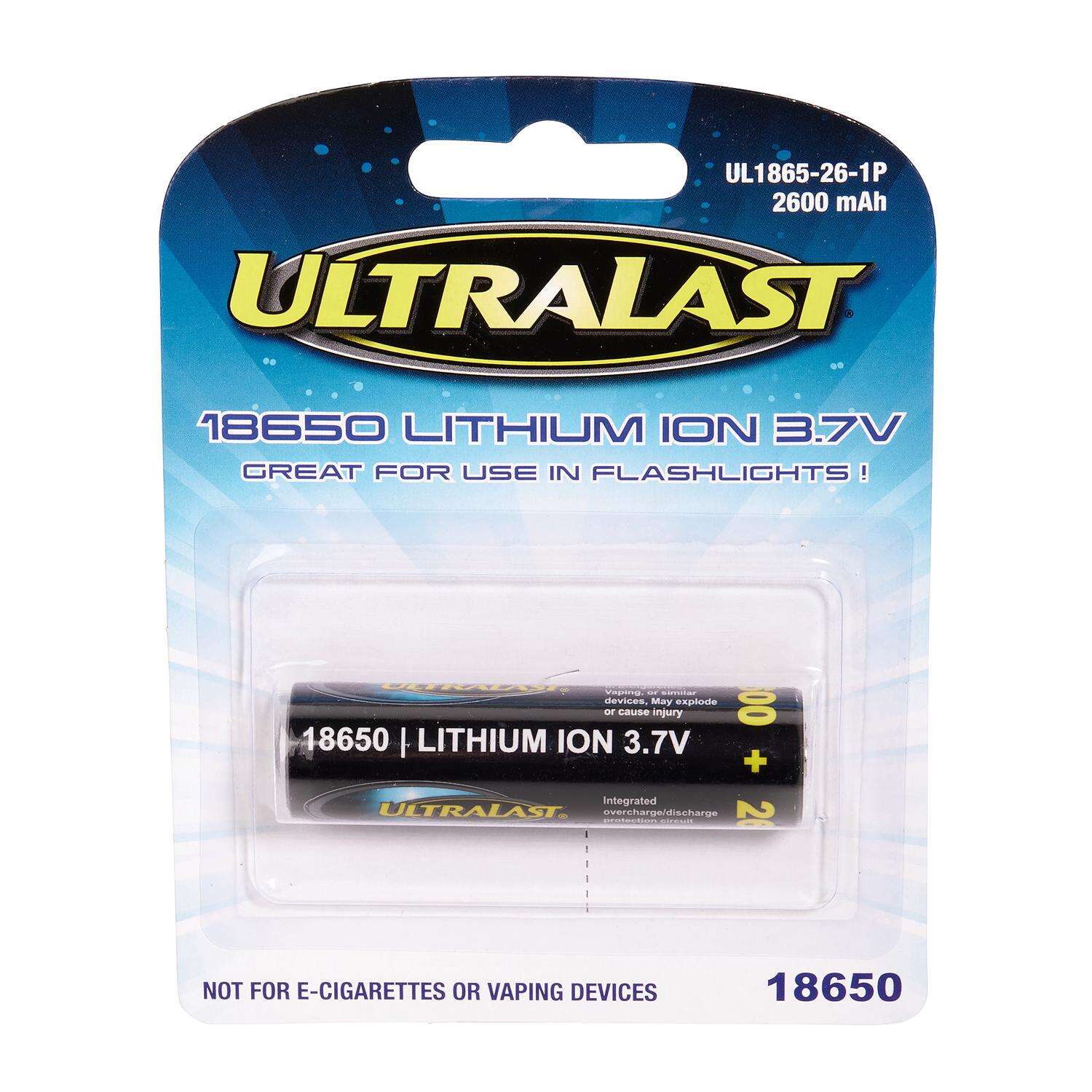
Photo from Ace Hardware
Have you seen your smartphone battery? It is most likely Lithium-ion battery. It is the most frequently used battery in the world in modern times. It is rechargeable. Its mechanism centers on utilizing lithium ions' capacity to hold energy in its cells. Mobile phones and other portable gadgets frequently use these batteries.
- NiMH Batteries
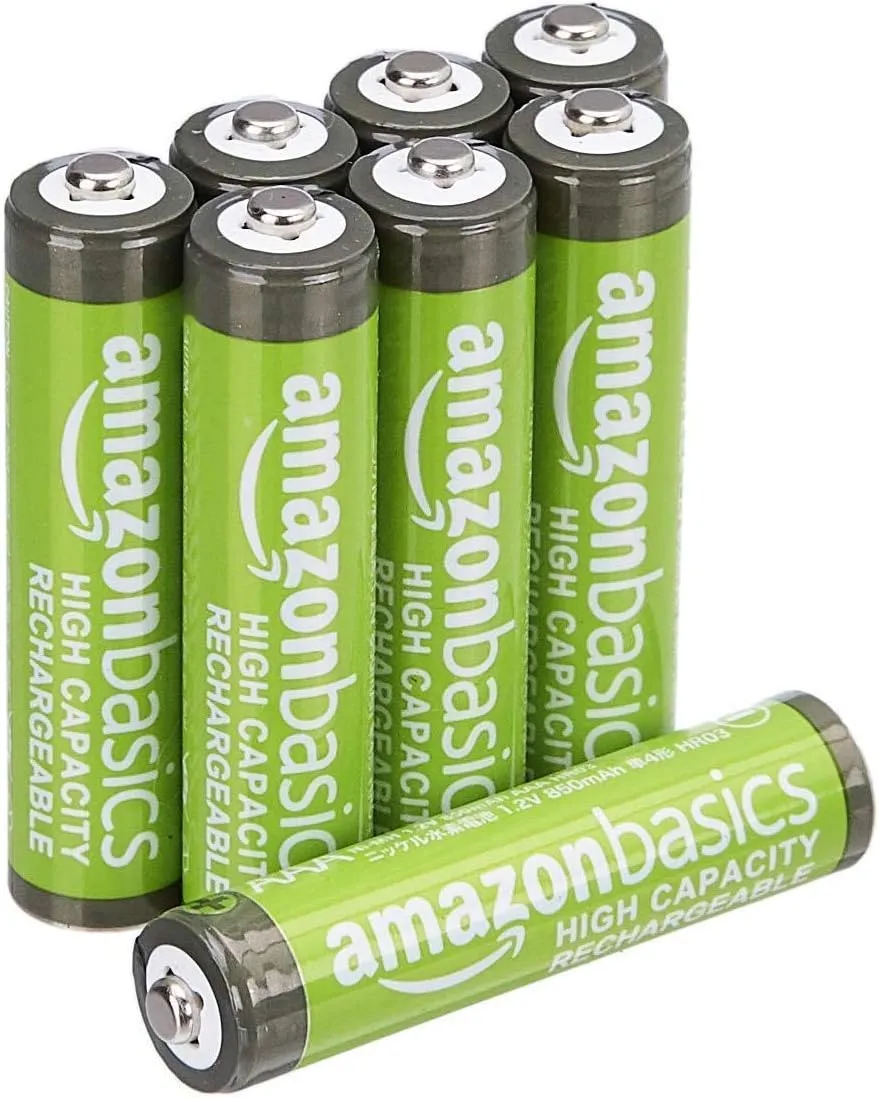
Photo from Amazon
These batteries are also known as Nickel-metal hybrid batteries and are also rechargeable. These have a battery power that is higher than that of NiCd batteries but lower than that of lithium-ion batteries.
- NiCd Batteries
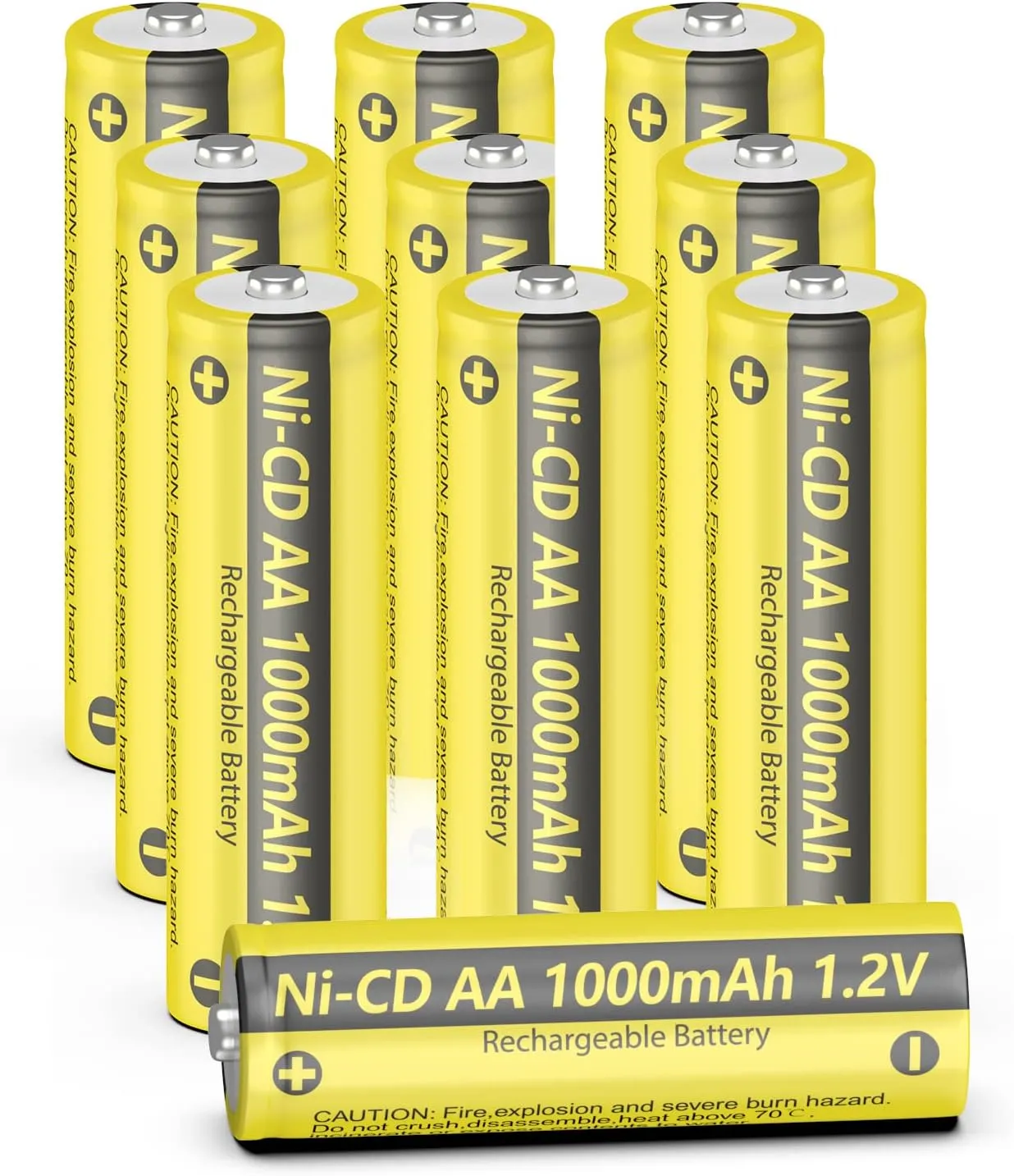
Photo from Amazon
Nickel-cadmium batteries are also rechargeable. However, compared to other types of batteries, these batteries have a significantly higher self-discharge percentage. But these provide steady powerful energy flow making it perfect for high-drain devices like flashlights or digital camera.
- There are other battery types as well that we don't see in use as frequently as the others listed above, such as aluminum-ion batteries, Glass batteries, Silicon–air batteries, and many more.
Is Battery Size Universal?
There are probably devices in your home that require various types and sizes of batteries to function properly. Regulatory bodies like the International Electrotechnical Commission (IEC) and the American National Standards Institute (ANSI) determine the dimensions and varieties of batteries. In addition to these, ANSI, Japanese Industrial Standards (JIS), British Standards (BS), and other organizations have created national size and type standards.
You may be wondering at this point if battery sizes are universal. Yes, the common household battery has the same size everywhere in the world.
Although they can have different names. For example, the most common size battery is the AA battery. However, this battery size is referred to as “R6” by the IEC 60086 standard, “15” by the ANSI C18 standard, and “UM-3” by the JIS.
Size Chart for Batteries
A typical consumer can be perplexed by all the numerous names and sizes. For this, I have included a chart for common battery sizes used at most households below. Although this is a long list, it is no way an exhaustive one!
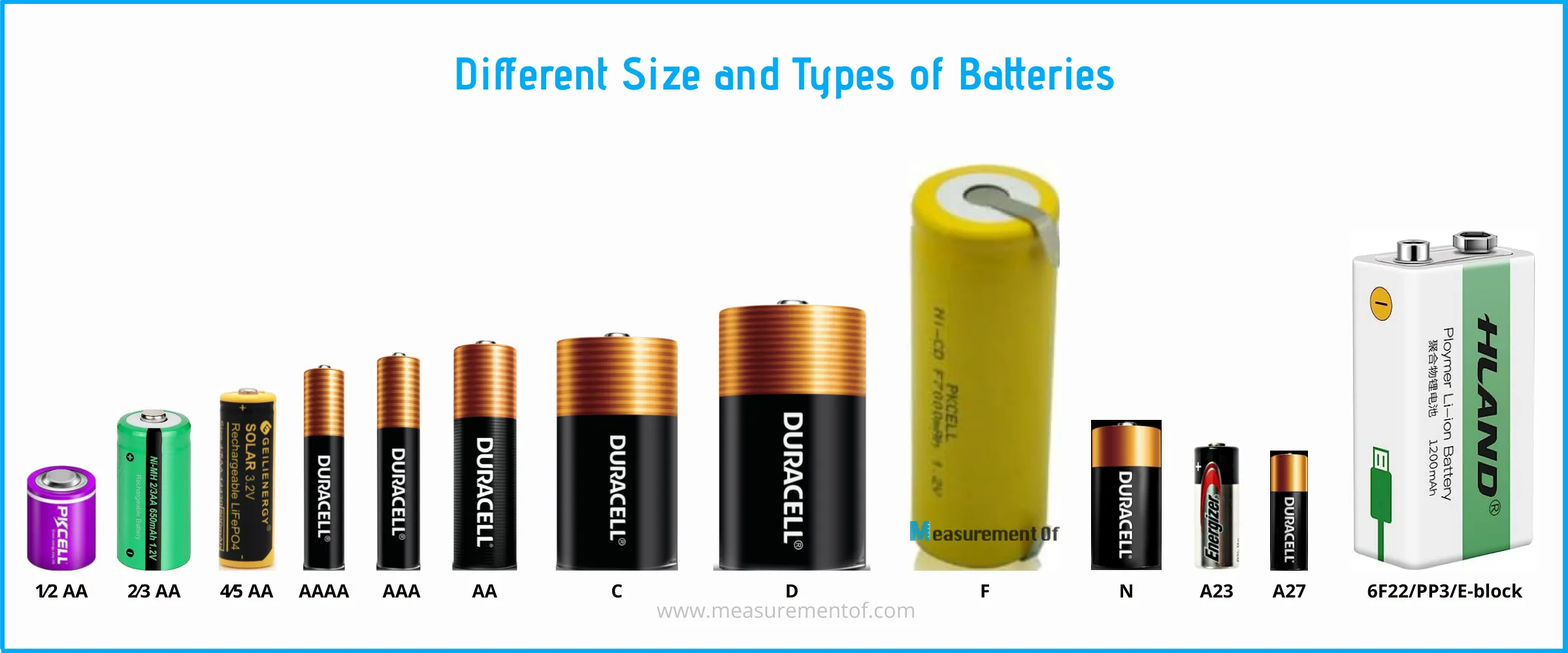
Photo courtesy: Duracell and Amazon
| Size/Name of Battery | Diameter / Width | Height/ Length | Common Usage |
|---|---|---|---|
| 1⁄2 AA | 14.5 mm (0.57 inches) | 25.0 mm(0.98 inches) | Small electronics such as pulse oximeter. |
| 2⁄3 AA | 15.0 mm (0.59 inches) | 34.5 mm(1.36 inches) | Solar lights, shaving kits, radios, meters and other electric tools. |
| 4⁄5 AA | 14.0 mm(0.55 inches) | 40.0 mm(1.57 inches) | Small household electronics like electric shaver. |
| 4SR44 | 13.0 mm(0.51 inches) | 25.2 mm(0.99 inches) | Film camera, flash device, light meters, dog training device, small LED flashlights, digital clocks etc. |
| AAAA | 8.3 mm(0.33 inches) | 42.5 mm(1.67 inches) | Powered styluses like electric pen that comes with tab or laptop, pen flashlights, laser enabled pointers, glucose meter, blue tooth headsets, and small calculators. |
| AAA | 10.5 mm (0.41 inches) | 44.5 mm (1.75 inches) | Most small household electronics including TV remote control, toys, small flashlights, clock, and cordless phone. |
| AA | 14.5 mm (0.57 inches) | 50.5 mm (1.97 inches) | Same as triple A batteries. Used in many household electronic devices such as remote controls, thermometers, hand sanitizers etc. |
| A* | 17.0 mm (0.67 inches) | 50.0 mm (1.96 inches) | Older model laptops. |
| B* | 21.5 mm (0.85 inches) | 60.0 mm (2.36 inches) | Specific type of lantern available only in Europe. |
| C | 26.2 mm (1.03 inches) | 50.0 mm (1.97 inches) | Musical instruments, toys, and large flashlights etc. heavy-duty equipment. |
| D | 34.2 mm (1.35 inches) | 61.5 mm (2.42 inches) | Used in where power is drained fast such as automatic odorizer, hands-free sensor faucets, digital cameras, radio systems, soap dispenser and safety systems. |
| F | 33.0 mm (1.30 inches) | 91.0 mm (3.58 inches) | Used in lanterns more commonly. |
| N | 12.0 mm (0.47 inches) | 30.2 mm (1.19 inches) | Lower drain applications such as small flashlights, small desk clocks, wireless microphones, small radio receivers, vintage calculators etc. |
| A11 | 10.3 mm (0.41 inches) | 16.0 mm (0.63 inches) | Devices requiring high drain power for long term like photography equipment, wrist watch, keyfobs, vehicle alarm, e-cigars. |
| A23 | 10.3 mm (0.41 inches) | 28.5 mm (1.12 inches) | Small RF devices like watches, doorbells, garage door opener, remotes, keyless locks, medical equipment etc. |
| A27 | 8.0 mm (0.31 inches) | 28.2 mm (1.11 inches) | Small RF devices where high pulse current is required such as- small remotes, car alarm remotes, cigarette lighters, GPS devices etc. |
| CR1220/ Button cell | 12.5 mm (0.49 inches) | 2.0 mm (0.08 inches) | Laser pens, fitness equipment, car key, calculator, clinical thermometer, heart rate monitor, toys, keyless input devices etc. |
| CR1620/ Button cell | 16.0 mm (0.63 inches) | 2.0 mm (0.08 inches) | Common in car alarm, car flashlight keychain, electric thermometer, calculator, digital watches, toys, camera, radio equipment, glucometer, organzier etc. |
| CR2 | 15.6 mm (0.61 inches) | 27.0 mm (1.06 inches) | Mainly used in older film cameras. Other uses include alarm, various instruments, compact flashlights etc. |
| G | 32.0 mm (1.26 inches) | 105.0 mm (4.13 inches) | Rechargeable batteries used commonly in Sony digital cameras. |
| 6F22/PP3/E-block | 17.5 mm (0.69 inches) | 48.5 mm (1.91 inches) | Walkie-talkies, smoke alarms, wireless microphones, cameras, medical applications etc. |
*Not produced/used anymore
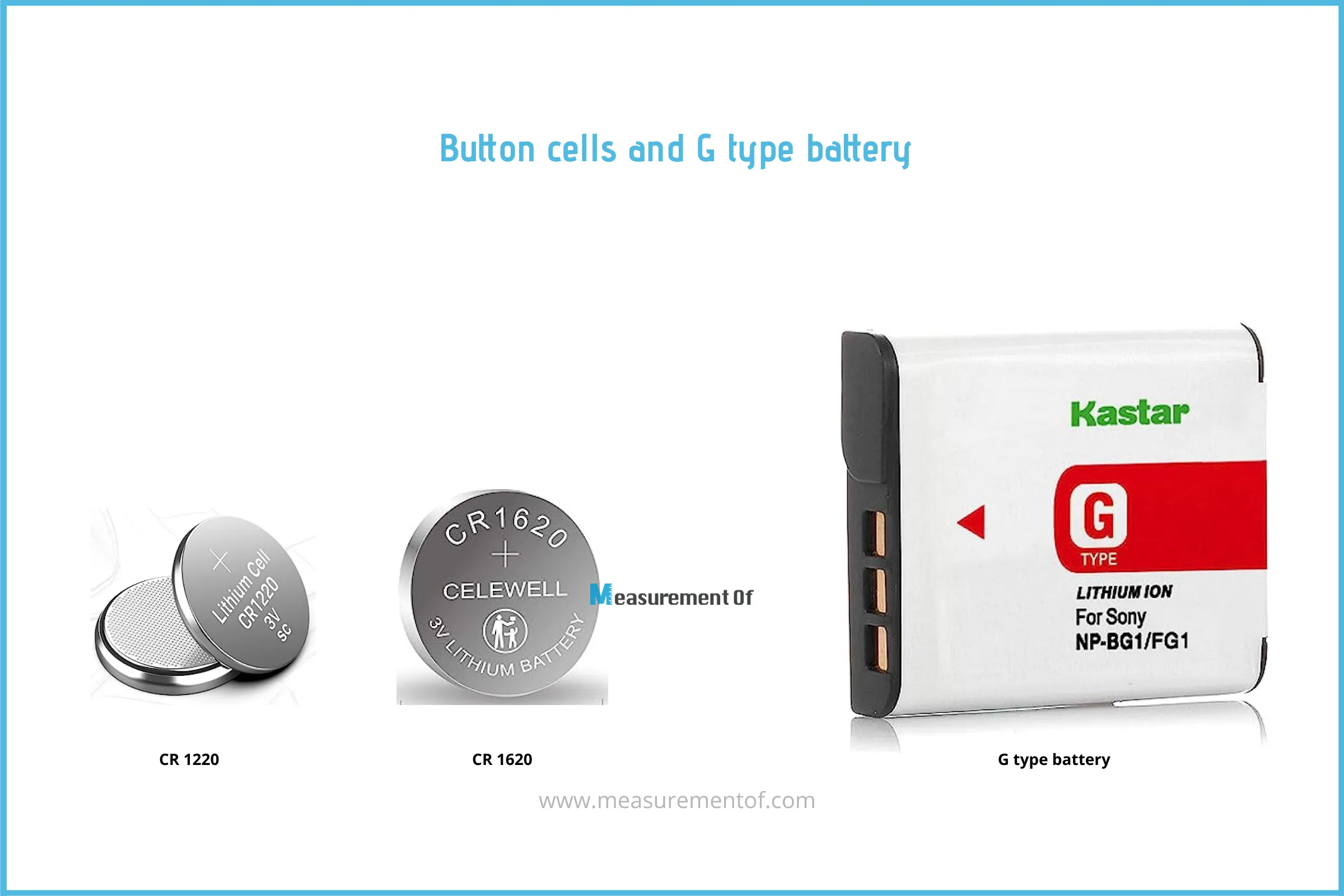
Photo courtesy: Amazon
How To Read A Battery?
You don't have to be a rocket scientist to read batteries, their sizes, and their capacities.

Photo by Luis Quintero on Pexels
The sizes are either given in mm or inches, or the size is indicated by the battery's name. A battery's capacity is expressed in either milliamp-hours (mAh) or amp-hours (aH). This is typically printed on the pack or the side of the batteries.
The battery may also have a Recommended Charge Rate (Amps) inscribed on it if it is a rechargeable battery. When using a constant-current charger, this amperage is advised for charging the battery.
How Do I Know Which Battery Size I Need?
You can look it up in the device's manual; the required size and type of battery should be mentioned there.
Alternatively, you could also compare housing size with battery size from the above chart.
Conclusion
The size and type of battery that you use with your devices affect how well they work. Therefore, selecting the correct battery size and type is essential. I hope this article has helped you understand the various battery sizes and types available.




